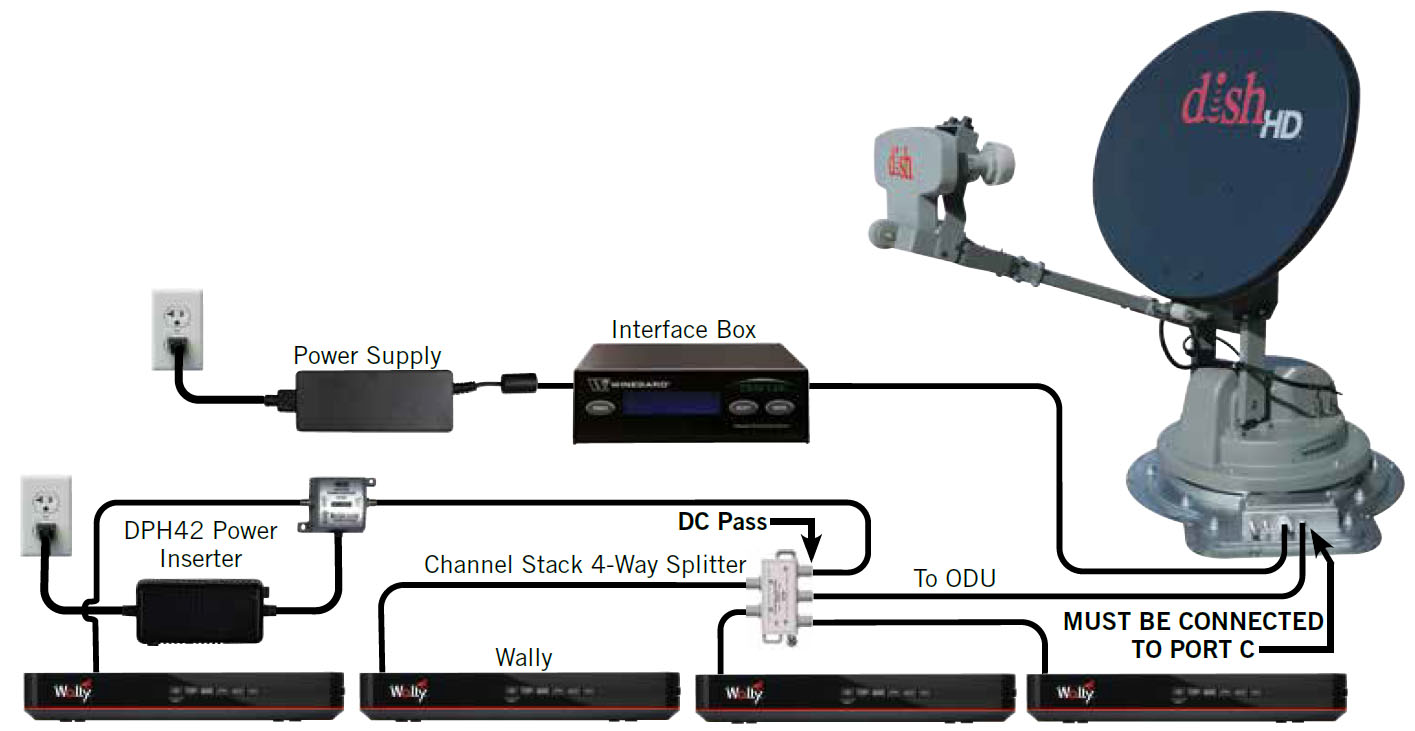I am considering upgrading my Pathway X2 to a tripod dish with Hybrid LNBF for various reasons.
My RV has 3 sattelite inputs; one to each room, each connected to a Wally. I'd like to be able to connect a hybrid lnbf on a tripod with a single coax back to the RV and distribute to each of the rooms.
My understanding is that I would at minimum need a Channel Stack Splitter (4 way). I could mount this near the existing RV sat inputs, run coax from the tripod dish to the input of the splitter, then 3 short runs from the splitter to the 3 rv inputs.
Are there any other components required for this installation? A resistor for the open port on the splitter? a power inserter?
I found this thread from 2018 with a similar scenario, although I'm unsure what is meant by K2 here.
 www.satelliteguys.us
www.satelliteguys.us
Any help would be greatly appreciated!
My RV has 3 sattelite inputs; one to each room, each connected to a Wally. I'd like to be able to connect a hybrid lnbf on a tripod with a single coax back to the RV and distribute to each of the rooms.
My understanding is that I would at minimum need a Channel Stack Splitter (4 way). I could mount this near the existing RV sat inputs, run coax from the tripod dish to the input of the splitter, then 3 short runs from the splitter to the 3 rv inputs.
Are there any other components required for this installation? A resistor for the open port on the splitter? a power inserter?
I found this thread from 2018 with a similar scenario, although I'm unsure what is meant by K2 here.
Wally's with Channel Stack Splitters
I've installed a couple of multiple Wally setups in a couple of businesses that are having problems. First one I have 3 Wally's at a bar. Setup is DPP LNB 3 lines into a 42. Out of 42 one line inside to a 42 Power Inserter behind the bar. From that into a 4-Way Channel Stack Splitter, then...
Any help would be greatly appreciated!


